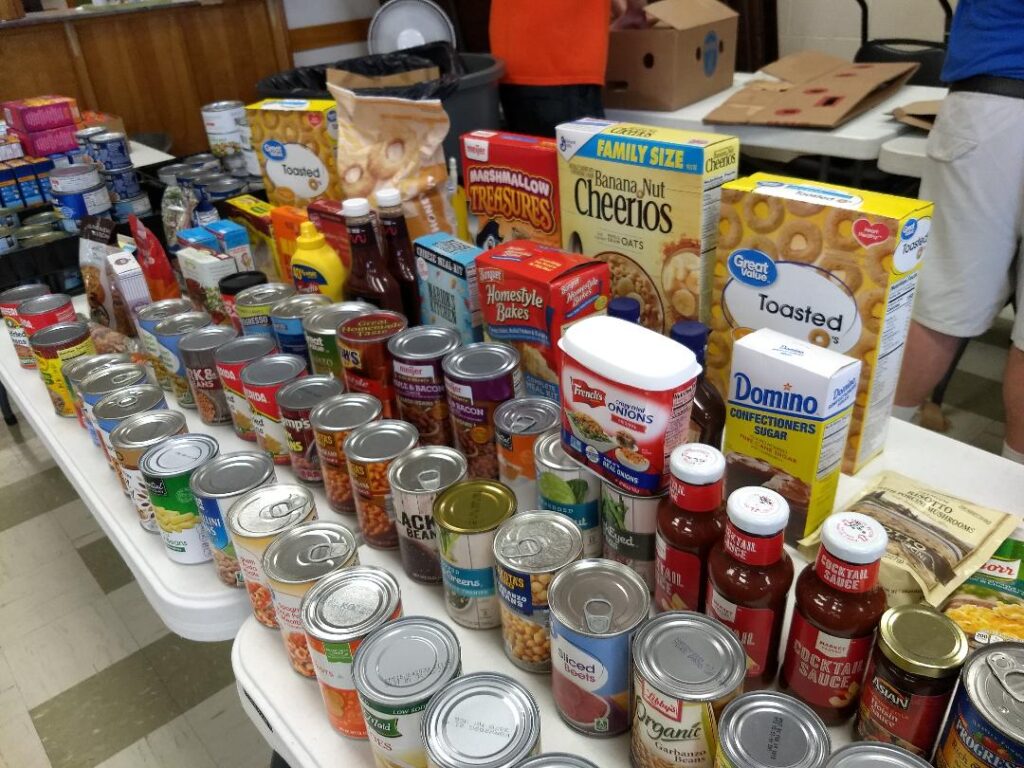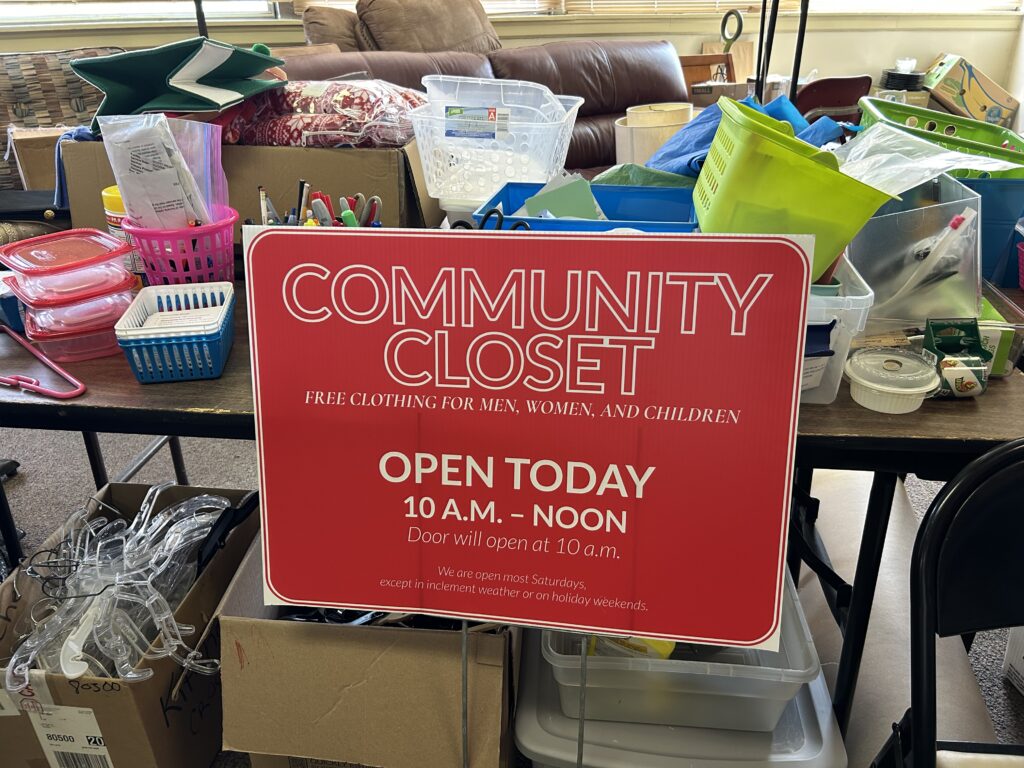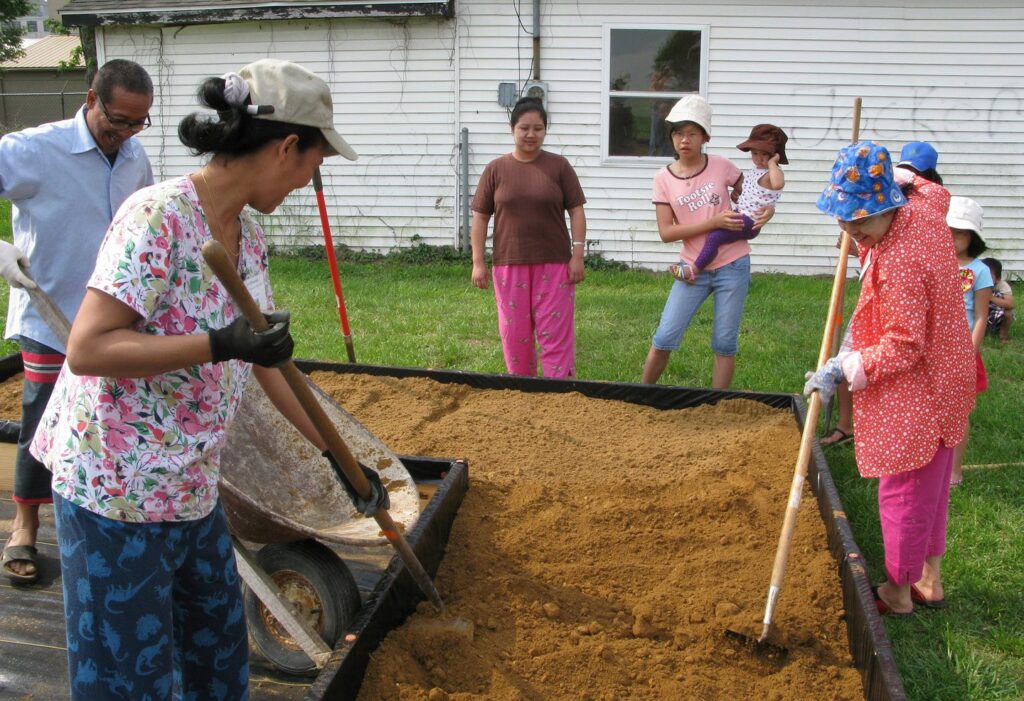Welcome
If you are in the beginning stages of starting one of these local mission ministries, we invite you to check out these resources that you may find helpful. It may give you some ideas to help you along the way. Be sure to check out the MAP to find congregations already at work in these areas.
Feeding
Is your congregation just beginning to dream about starting a feeding ministry at your church? If so, here are some things to consider below. Feel free to dive in deeper to the resources at the bottom of the page and/or join the Community Forum to engage with others.
Considerations for Starting a Feeding Ministry
Food Safety and Handling
State and Local Licenses:
Churches may need to obtain licenses from the health department to operate a food pantry, especially if they are preparing or distributing food that is not in its original packaging.
Food Safety Training:
Volunteers involved in food preparation and distribution may need to complete food safety training and obtain certifications.
Proper Storage and Handling:
Food pantries must store food properly, including refrigerated items at the appropriate temperatures and maintaining good hygiene practices to prevent contamination.

Liability
Good Samaritan Care Act:
The Bill Emerson Good Samaritan Food Donation Act provides some protection against civil and criminal liability for food donations made in good faith.
Insurance:
Churches should have appropriate insurance coverage for food pantry operations, especially if they are distributing food to the public.
Local Ordinances
Zoning:
Churches must ensure that their food pantry operations comply with local zoning regulations and that the space used for the pantry is suitable for its intended purpose.
Local Housing Ordinances:
If a church is also providing shelter, it must comply with local housing ordinances.
Commercial Activities:
If the church is selling food or engaging in other commercial activities related to pantry, they may need to comply with local regulations related to business licensing and taxes.
501(c)(3) Status
Exempt Purpose:
Churches operating a food pantry must ensure that the activities are aligned with their tax-exempt purposes, which generally include charitable activities.
Separation of Functions:
If the church has a separate legal entity (e.g., a foundation) that runs the food pantry, it’s important to maintain separation of funds and operations to avoid potential issues with tax-exempt status.
General Resources
- Church Law & Tax: Tips for Starting a Church Food Pantry
- Gradient: How to set up and promote a food pantry at your church
- Food Bank of the Rockies: Tips for Organizing and Operating a Food Pantry Program
- USDA – Good Samaritan Act Provides Liability Protection For Food Donations
- Second Harvest of Silicon Valley – Basic Food Safety Training
Clothing
Is your congregation just beginning to dream about starting a clothing ministry at your church? If so, here are some things to consider below. Feel free to dive in deeper to the resources at the bottom of the page and/or join the Community Forum to engage with others.
1. Secure Leadership Support and Gather Volunteers
- Church Leadership Approval:
Gain approval from your pastor and/or church leadership to initiate the ministry. - Recruit Volunteers:
Assemble a team of volunteers to assist with various tasks, such as preparing and sorting clothing, operating the closet, and record keeping. - Clear Responsibilities:
Assign specific roles and responsibilities to each volunteer to ensure smooth operation.

2. Define Operational Guidelines
- Eligibility:
Establish clear criteria for who is eligible to receive clothing, such as church members, individuals in the community, or a specific population group. - Distribution:
Determine how much clothing can be received per visit or per family and how the distribution will be set up. What are the days, hours of operation? How many times can people visit? - Record Keeping:
Implement a system to track inventory, donations, and guest visits to manage the ministry effectively.
3. Prepare the Space and Equipment
- Designated Location:
Choose a suitable space within the church or community building for the clothes closet. - Essential Equipment:
Gather necessary equipment such as clothing racks, hangers, shelves, tables, chairs, and bins for storing clothing and organizing the space. - Comfortable Environment:
Consider adding mirrors and a nearby bathroom for individuals to try on clothes.
4. Stock the Clothing Closet
- Church-Wide or Community Drive:
Organize a church-wide or community-wide clothing drive to collect donations. - Sorting and Tagging:
Sort and tag donated clothing by size, type, and gender to facilitate distribution. - Targeted Donations:
Encourage donations of specific items that are in high demand, such as coats, sweaters, socks, and work boots, etc.

5. Promote the Ministry
- Internal Communication:
Announce the ministry within the church community, using bulletins, social media, and other communication channels. - External Outreach:
Market the ministry to the broader community, such as foster and adoption support groups, local human services, and other churches.
6. Ongoing Management and Maintenance
- Inventory Management:
Regularly track inventory, monitor donations, and replenish the closet as needed. - Volunteer Training:
Provide ongoing training for volunteers on best practices for sorting and distributing, interacting with community members and managing the ministry. - Flexibility and Adaptation:
Be prepared to adapt the ministry’s operations based on changing community needs and available resources.
DOC Resources
Central Christian Church in Lexington, KY: https://www.centralchristianlex.org/Community-Closet
https://www.centralchristianlex.org/thriftstore
Montgomery City Christian Church in Montgomery City, MO
https://www.mid-americadisciples.org/mission-work/2019/3/25/montgomery-city-christian-church-clothing-closet
Central Christian Church in Indianapolis, IN
https://www.indyccc.org/witness
Sheltering
Is your congregation just beginning to dream about starting a sheltering ministry at your church? If so, here are some things to consider below. Feel free to dive in deeper to the resources at the bottom of the page and/or join the Community Forum to engage with others.
1. Assessment and Planning
- Identify Needs: Conduct research within the church and community to understand the specific housing needs, such as homelessness, affordable housing shortages, and the needs of specific populations (e.g., single-parent families, seniors).
- Assess Resources: Evaluate the church’s existing resources, including financial donations, volunteer time, and physical space/land that could be used for ministry programs.
- Define Goals and Objectives: Set clear, measurable goals for the ministry, such as the number of people helped, the type of services offered, and the duration of the ministry.

2. Community Engagement
- Network with Local Organizations: Connect with local homeless shelters, housing agencies, social service providers, city/county offices and other relevant organizations to learn about resources and opportunities for collaboration.
- Seek Partnerships: Partner with other churches or community groups to expand reach and resources.
- Advocate for Change: Advocate for policy changes at the local, state, and national levels to address systemic issues contributing to housing insecurity.
3. Implementation
- Provide Direct Assistance: Offer immediate help to individuals or families experiencing housing insecurity, such as providing temporary shelter, food, clothing, and other necessities.
- Build Relationships: Develop relationships with people facing housing insecurity, providing ongoing support, encouragement, and resources.
- Offer Education and Counseling: Provide educational programs and counseling services to help individuals develop life skills, gain employment, and find stable housing.
- Advocate for Stable Housing: Work with individuals to find long-term housing solutions, such as connecting them with affordable housing programs or assisting them in securing their own housing.

4. Evaluation & Improvement
- Track Progress: Regularly monitor the ministry’s progress towards its goals and objectives, using data to assess its effectiveness.
- Seek Feedback: Solicit feedback from those served by the ministry to identify areas for improvement.
- Refine the Plan: Adapt the plan based on the evaluation results and feedback, making necessary adjustments to ensure the ministry continues to meet the needs of the community.
General Resources
- Alban at Duke Divinity School – “Can your church help solve housing problems?
- Lewis Center for Church Leadership – “YES in God’s Back Yard!”
- The Conversation – “Affordable housing in God’s backyard: Some religious conregations find a new use for their space.”
- Family Promise – Emergency Housing Solutions
Climate
Is your congregation just beginning to dream about starting a climate ministry at your church? If so, here are some things to consider below. Feel free to dive in deeper to the resources at the bottom of the page and/or join the Community Forum to engage with others.
Advocacy & Education
- Advocating for Climate-Friendly Policies:
Many churches are actively lobbying for policies that promote renewable energy, reduce greenhouse gas emissions, and address environmental justice. - Educating Congregations:
Churches are using sermons, classes, and other resources to educate their members about the science of climate change, the need for action, and the role of faith in addressing the issue. - Promoting Sustainable Practices:
Churches are encouraging their members to adopt more sustainable lifestyles, including reducing energy consumption, recycling, and reducing waste both inside and outside the congregation.

Local Initiatives
- Forming Climate Centered Ministries:
Many churches have established ministries dedicated to caring for God’s creation and advocating for climate action locally, regionally and globally. - Implementing Sustainable Practices in Church Buildings:
Churches are reducing energy consumption, switching to renewable energy sources, and implementing water conservation measures. - Partnering with Other Organizations:
Churches are working with organizations like Interfaith Power & Light, Green Chalice, Blessed Tomorrow, and/or Creation Justice Ministries to support climate action and provide resources.

